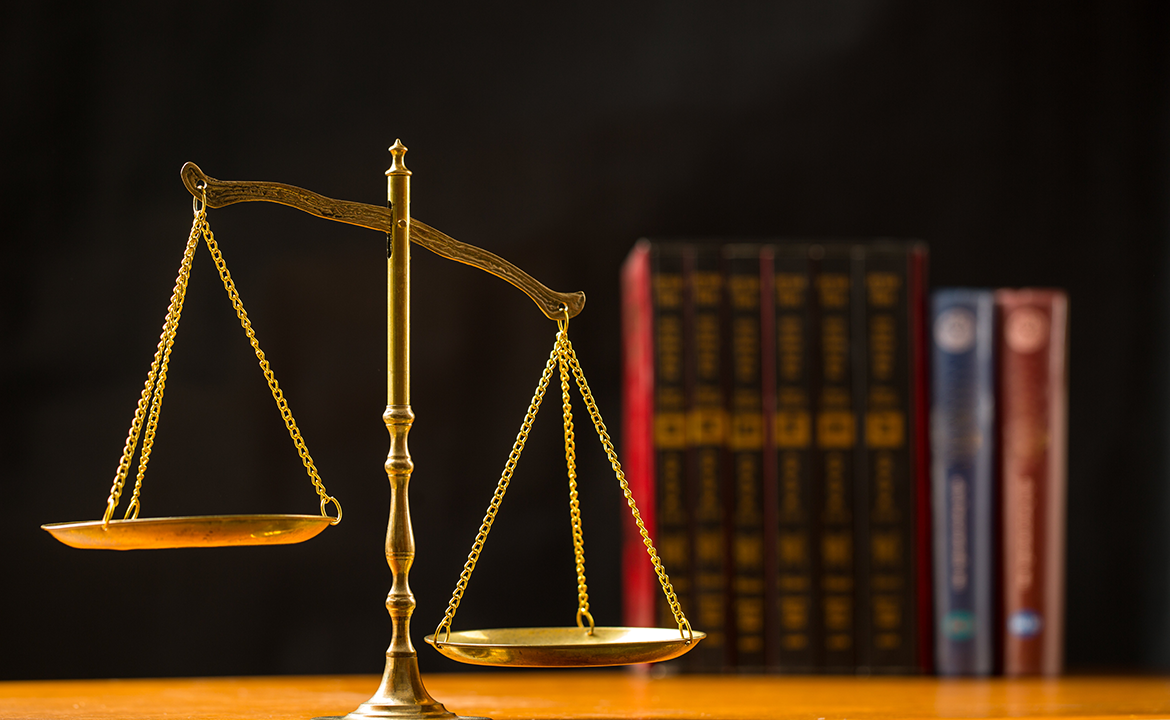This article summarizes some of the most basic rules of evidence used in criminal and civil proceedings and which is used in both federal and state level trial courts.
There are two types of evidence codes. One is used for criminal proceedings, and the other for civil proceedings. Both codes are similar but differ as to the standard of proof required to prevail at trial.
Criminal Law Requires a High Threshold Of Proof
In criminal law, the prosecutor carries the burden of proving their case “beyond a reasonable doubt,” which is a very high standard of proof. The reason for the high standard is that in criminal cases, the defendant’s very freedom is at stake. This is not the situation in civil cases where the risk of loss is only pecuniary. The law rightly places a premium on one’s right to freedom, the loss of which should and does require a much higher threshold of proof.
States have their own evidence criminal evidence code
The rules governing the admission and exclusion of evidence in criminal cases j can be found in the state’s rules of evidence. Under the principle of states’ rights to enact their own laws, most states have their own evidence code, which substantially mirrors the federal rules of evidence.
Evidence code provides uniformity of law and due process
The evidence code ensures a uniform and consistent set of rules and procedures by which a court may admit or exclude evidence from a jury’s consideration in reaching its verdict. Where a case is tried without a jury, the judge will fill that role.
Rules of evidence also ensure fairness, impartiality, and transparency
Establishing a comprehensive set of evidence rules ensures that the nation’s fundamental principles of fairness and impartiality are applied equally in all judicial proceedings. For example, the rules of evidence and procedure require opposing parties to engage in a mutual exchange of evidence and witness lists before trial in what is called a pretrial conference.
The reasoning behind exchanging evidence and witness lists is to prevent one side from ambushing the other with surprise evidence at the time of trial. The courts are said to abhor trial by ambush, and for a good reason. Cases should be tried on their merits, not through adversarial trickery.
Four general categories of evidence:
- Physical evidence: A weapon or the fingerprints found on the weapon
- Testimonial evidence: The witness testifies in court about what she heard the defendant say
- Demonstrative evidence: The expert shows a model depicting a crime scene
- Documentary evidence: The ransom note used in the crime
Evidence can take almost any form so long as it is deemed admissible under that jurisdiction’s rules of evidence.
- Sound, video, film recordings, and photographic images
- Business records, personal records, phone records,
- Traditional letters, e-mails, tweets, social media posts,
- Wills, contracts, deeds, trust, birth, and death records
- Medical records, x-ray reports, prescriptions, lab reports, and billing statements
Direct and Indirect Evidence
Evidence is relevant either directly or indirectly. Indirect relevance is also referred to as circumstantial evidence. As shown below, both direct and indirect evidence are admissible to prove or disprove a contested fact or issue in a case.
Direct Evidence:
Evidence that is perceived directly by the senses. The relevancy does not need to be inferred by the presence of the underlying fact. For example, one witness testifies in a murder case, “I saw the defendant pull out a gun from his jacket and shoot a man” This is direct evidence of the defendant shooting a man.
Indirect Evidence:
Evidence is relevant only by inference from the presence of an underlying fact. For example, a different witness testifies, “I saw the defendant reach into his jacket, but I was too far away to see what he pulled out.” Here an inference can be made that the defendant pulled a gun from his jacket because the first witness testified to seeing the entire incident.
Evidence to be used at trial must first be admitted by the court
The rules governing the admission or exclusion of evidence depend on whether the evidence is considered competent by the court. Evidence is ruled competent if it is sufficiently relevant, credible, authentic, and trustworthy.
The rules governing relevancy
If there were one set of evidentiary rules that stands out among the rest, it would be the rules governing the law of relevancy.
The Foundational Rule of Relevancy
“Evidence is said to be relevant if it tends to prove or disprove a fact or issue in controversy in the case.”
A fact or issue in controversy almost always comes down to whether the evidence tends to prove or disprove an essential element of a crime. Let’s look at the specific proof necessary to prove criminal battery.
Battery
To prove the crime of battery, the prosecutor must prove each of the following essential elements of the crime and do so beyond a reasonable doubt.
- The defendant took action
- intending to cause contact with the victim
- resulting in the victim suffering harmful or offensive contact.
Not all relevant evidence is admissible evidence
In some instances, even if the court finds that the evidence technically meets the relevancy requirement, the court may nonetheless exclude such evidence if it determines that the evidence offered is substantially more prejudicial than probative, given the context of the facts and issues of the case.
Evidence that is more prejudicial than probative
Under the Federal Rules of Evidence, this exception to the relevancy rule gives the court considerable discretion to exclude otherwise admissible evidence. Examples of evidence that might be considered more prejudicial than probative include:
- A party’s prior criminal conviction(s)
- A party’s prior bad act(s)
- Evidence that is likely to inflame, confuse or mislead the jury,
Other reasons a court may exclude relevant evidence include:
- Evidence that is likely to cause undue delay
- Evidence that is cumulative or redundant
The Federal Rules of Evidence contain the following primary sections, each containing a set of standard evidence rules, exceptions to the rules, and legislative and judicial notes related to a particular rule.
These sections include:
- The Hearsay Rule and Exceptions
- The Courts Power to take Judicial Notice
- Evidentiary Presumptions in Civil Actions and Proceedings
- The Scope and Limits of Relevancy
- Privileged Communications
- Scope of Witness Testimony
- Opinions and Expert Testimony
- Authentication and Identification of Evidence
- Rules on Writings, Recordings, and Photographs
Hearsay Rule – A Rule Governed By Its Exceptions
The hearsay rule of exclusion is, in fact, a rule that is governed by its exceptions.
The primary purpose of the hearsay rule is to eliminate potentially unreliable out-of-court statements from being used as evidence at trial. Out-of-court statements can be untruthful, biased, incompetent, and unduly prejudicial against either a party or in-court witness.
- Out-of-court second-hand information
- Out-of-court conjecture
- Out-of-court gossip
- Out-of-court rumors
- Out-of-court opinions
The problem with such out-of-court statements is that they are not made in court, before a judge and jury, nor is an out-of-court declarant under oath or subject to cross-examination.
Exceptions To TheHearsay Rule
The hearsay rule prohibiting out-of-court statements is said to be eaten up by the rule’s exceptions. Some of the most common exceptions are briefly described below:
- Present Sense Impression: A statement describing or explaining an event or condition made during or immediately after the declarant perceives it.
- Excited Utterance: A statement relating to a startling event or condition made while the declarant was under the stress of the excitement.
- Former Testimony: Former testimony taken under oath by a witness at a trial, hearing, or by deposition.
- Dying Declaration: Out-of-court statement by a declarant who believed their death was impending and imminent.
- Statement Against Interest: An out-of-court statement knowingly made by a party that goes against that party’s own legal or pecuniary interest.
- Party Admission: An out-of-court statement made by a party declarant that is offered against that party at trial.
- Medical Statements: Statements made between a doctor and patient during a medical examination, diagnosis, or treatment.
Selective Admissibility
The doctrine of selective admissibility gives the court power to allow evidence to be admitted for one purpose but exclude the same evidence to prove a prohibited purpose.
For example, the fact that a defendant was or was not insured against liability is not admissible to prove that the person acted negligently. But the court may selectively admit evidence of insurance for purposes of proving the witness was exercising management, ownership, or control of a particular property.
Expert-Opinion Testimony
The general rule is that lay witnesses cannot offer opinion testimony. Only expert witnesses that have been judicially approved as qualified experts can provide opinion testimony. The attorney seeking to elicit expert opinion must first lay a foundation demonstrating to the court that the witnesses possess the requisite schooling, credentials, and expertise to offer the opinion.
Final Thoughts
The rules of evidence are highly complex, yet a trial lawyer must become a master of these rules to be an effective advocate for their client. Often the rules of evidence are controlled more by the rule’s exceptions than by the rule itself.
The court’s rulings on selective admissibility may allow evidence to be introduced for one purpose but not another. In this way, the rules governing selective admissibility, the evidence can be used as both a sword and a shield.
In criminal cases, not only is there a higher burden of proof required to prevail than in civil cases, there are constitutional issues to consider, such as the inadmissibility of evidence that was obtained in violation of the defendant’s constitutional rights, such as the 4th and 5th Amendments rights which prohibit the government from making warrantless search and seizures or from coercing confessions that violate the defendants right against self-incrimination.
Locating A Criminal Defense Lawyer
Should you have specific questions or require additional information about your legal rights and obligations, we strongly advise you to consult with a verified Criminal Defense Lawyer about your issues as soon as possible.










